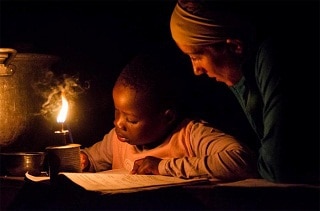Philips calls for action to end light poverty
More than 1.3 billion people are trapped in light poverty as they don’t have access to electricity. Most of those affected resort to kerosene lamps and candles to light their homes and businesses. But these primitive light sources claim the lives of 1.5 million people every year through respiratory illnesses and fires – the same number killed annually by HIV-related diseases.
The warning comes as the UN today marks the launch of its International Year of Light (IYOL). The global initiative will see the United Nations Educational, Scientific and Cultural Organization (UNESCO) bring together a large consortium of stakeholders. Included are scientific societies and unions, educational institutions, technology platforms, non-profit organisations and private sector partners. Throughout 2015, they will highlight the impact of light on social and economic development.
ADVERTISEMENT
Light poverty affects huge swathes of Africa, Asia and South America with as few as 1.5% of people in South Sudan provided access to electric light. In many developing countries, electrical grids are unviable due to the geographic and financial constraints of linking hundreds of remote communities. However, solar LED technology can provide light at a fraction of the cost of running kerosene lamps, without any of the health, safety or environmental dangers – or the need for major investment in infrastructure.
“Human suffering on this scale is unacceptable in the 21st century,” said Eric Rondolat, CEO of Philips Lighting.
“Solar-powered LED lighting can transform rural communities and save millions of lives. What’s more, it does not have to be invented – it already exists and is proven. I call on politicians to stand together and commit to ending light poverty by 2030.
“The economic case for taking action is irresistible – light is essential for human prosperity. Lifting 1.3 billion people out of light poverty would not only end this stranglehold on economic, social and cultural development but would also bring a boost to global GDP.”
A single solar-powered LED lantern uses zero energy and can fill a room with clean, electric light for an approximate one-off cost of US $10-20, compared to the US $50 approximate annual fuel bill of running a kerosene lamp. On a larger scale, energy efficient LED luminaires and solar panels can be combined to produce sustainable lighting in public places and bring communities to life outside of daylight hours. These Community Light Centers (CLCs) allow healthcare services and businesses to operate after sunset as well as encouraging sports and other social activities. Philips is in the process of installing 100 CLCs across 12 countries in Africa, where some 500 million people do not have access to light.
-
ADVERTISEMENT
-
ADVERTISEMENT


